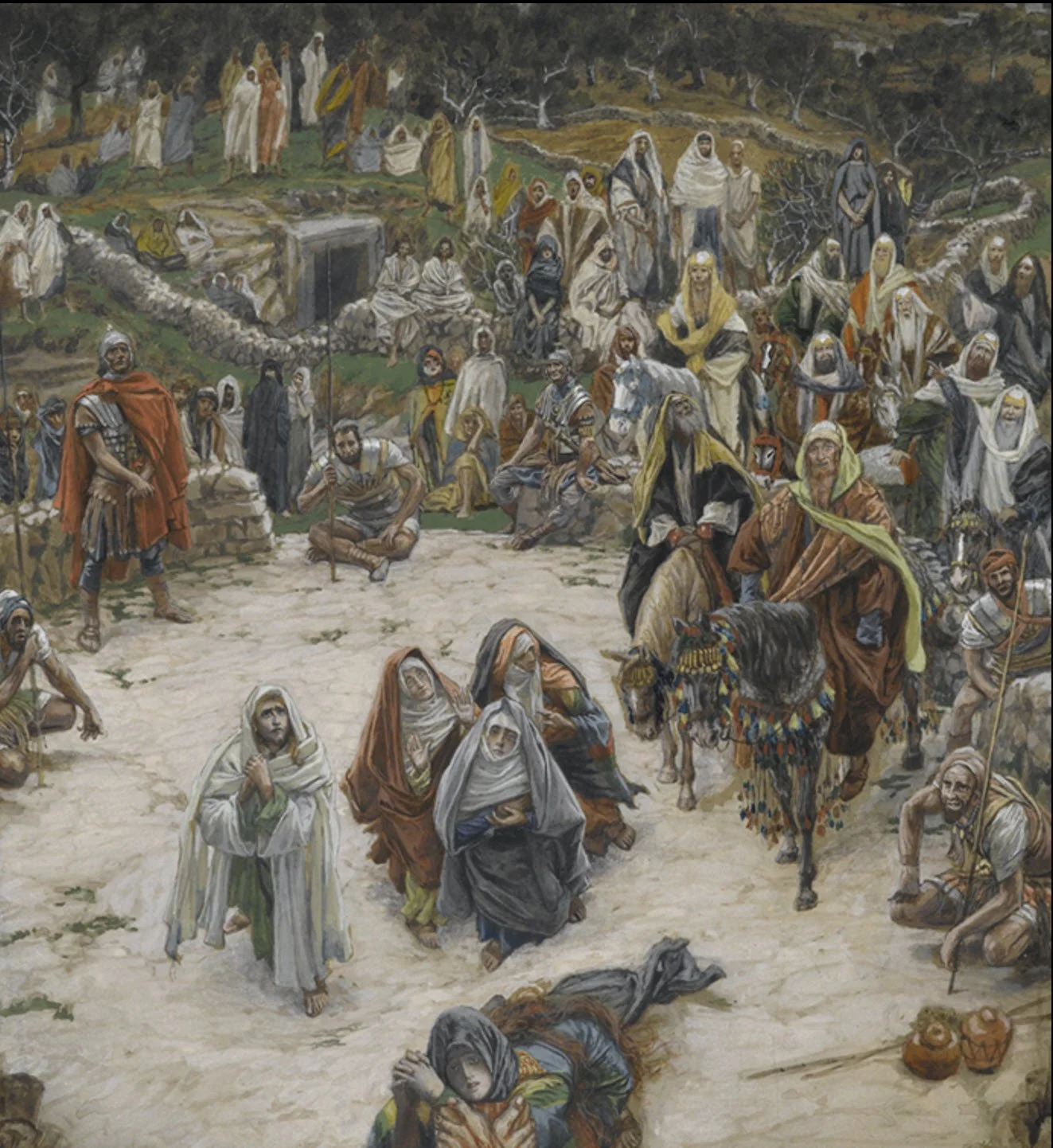Jesus loved his mom
James Tissot (French, 1836–1902). What Our Lord Saw from the Cross, 1886–94. Opaque watercolor over graphite on gray-green wove paper, 93⁄4 x 91⁄6 in. (24.8 × 23 cm). Brooklyn Museum, Purchased by public subscription, 00.159.299*
I recently discovered Tania Runyan, who wrote a series of poems called “Poet Jesus.” Tania says of her Poet Jesus poems, “a collection of poems written in the voice of Jesus. I do not claim to speak for Him, though I certainly experience a sense of joy and intimacy by imagining what He would say.” (Substack, Poet Jesus, Tania Runyan) I love them all, but especially this one, “Woman, Behold Your Son.” (linked and copied below)
I am fascinated by Jesus’ mother, Mary. Growing up in the Christian Reformed denomination, we didn't talk much about her. We noticed her at Christmas, and when she was mentioned in the Bible, but the line I heard most was, “We do not worship Mary.” No, and actually, neither do Catholics. But, when I say the Reformers threw the baby out with the bathwater, the most notable example I see of this is our lack of interest in Mary.
If the thought of reading a poem turns you off, forget this is a poem. Read it like a story. Which it is. Or pretend you’re listening to Jesus talk—from the cross. How crazy and incredible is it that Jesus did talk to Mary and his beloved disciple John while hanging from the cross? Tortured and dying. If I really let myself imagine it, I cry.
Near the cross of Jesus stood his mother, his mother’s sister, Mary the wife of Clopas, and Mary Magdalene. When Jesus saw his mother there, and the disciple whom he loved standing nearby, he said to her, “Woman, here is your son,” and to the disciple, “Here is your mother.” From that time on, this disciple took her into his home. ~John 19:25-27
Jesus loved his mom. He loves you. He loves me. He loves us.
Woman Behold Your Son
Watching Mom cry was one of the hardest parts
Tania Runyan
Apr 16, 2025
Tonight, you and John
will sit through the longest darkness
since the shapeless void—wordless—
an untouched plate of figs between you.
You will eventually stare up
from your sleeping mats, nauseated
by the scent of burial spices in your clothes
yet too withered from weeping
to change them.
Woman, you contracted
on a donkey through the desert,
pushed rumors away
from your tirelessly pondering heart.
John dropped his fishing net,
already hungry, then pursued me
into rising tides of sand.
Yes, my mission has just begun.
You’ll know for sure
after one more catatonic night.
But right now, it is time for you both
to breathe, to melt into your feet
as you lean against the wall.
Together, behold an empty space
that expects nothing from you
but throatsore, twisting lament.
Then, Mother, grow old into peace.
Let John wrap a cloak around
your shoulders. When you miss
those earthly parts of me,
cup your hand beneath his stubbled chin
and call him son.
—First appeared in The Christian Century, April 2025
* In the most memorable, and even notorious, of Tissot’s biblical images, Christ looks out at the crowd of spectators arrayed before him: Mary Magdalene, in the immediate foreground, with her long red tresses swirling down her back, kneels at his feet, which are clearly visible at the bottom center of the composition. Beyond her, the Virgin Mary clutches her breast, while John the Evangelist looks up with hands clasped. The artist here adopted the point of view of Christ himself. Few painters have conceived a composition this daring. In his audacity, however, Tissot remained true to his artistic vision for the series: ultimately, the image is an exercise in empathy. Its point is to give viewers, accustomed to looking at the event from the outside, a rare opportunity to imagine themselves in Christ’s place and consider his final thoughts and feelings as he gazed on the enemies and friends who were witnessing, or participating in, his death. ~Brooklyn Museum, James Tissot—”The Life of Christ”
